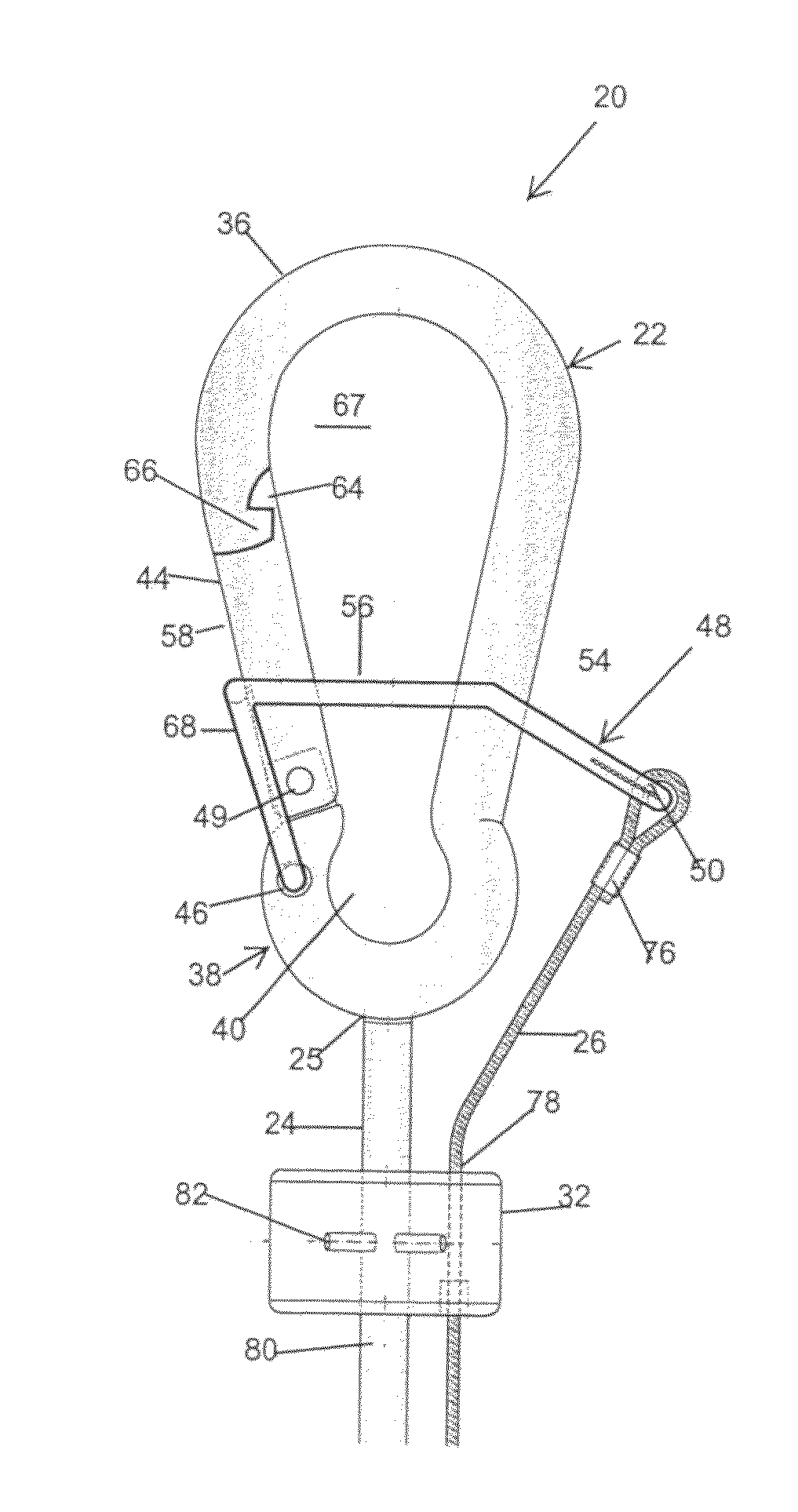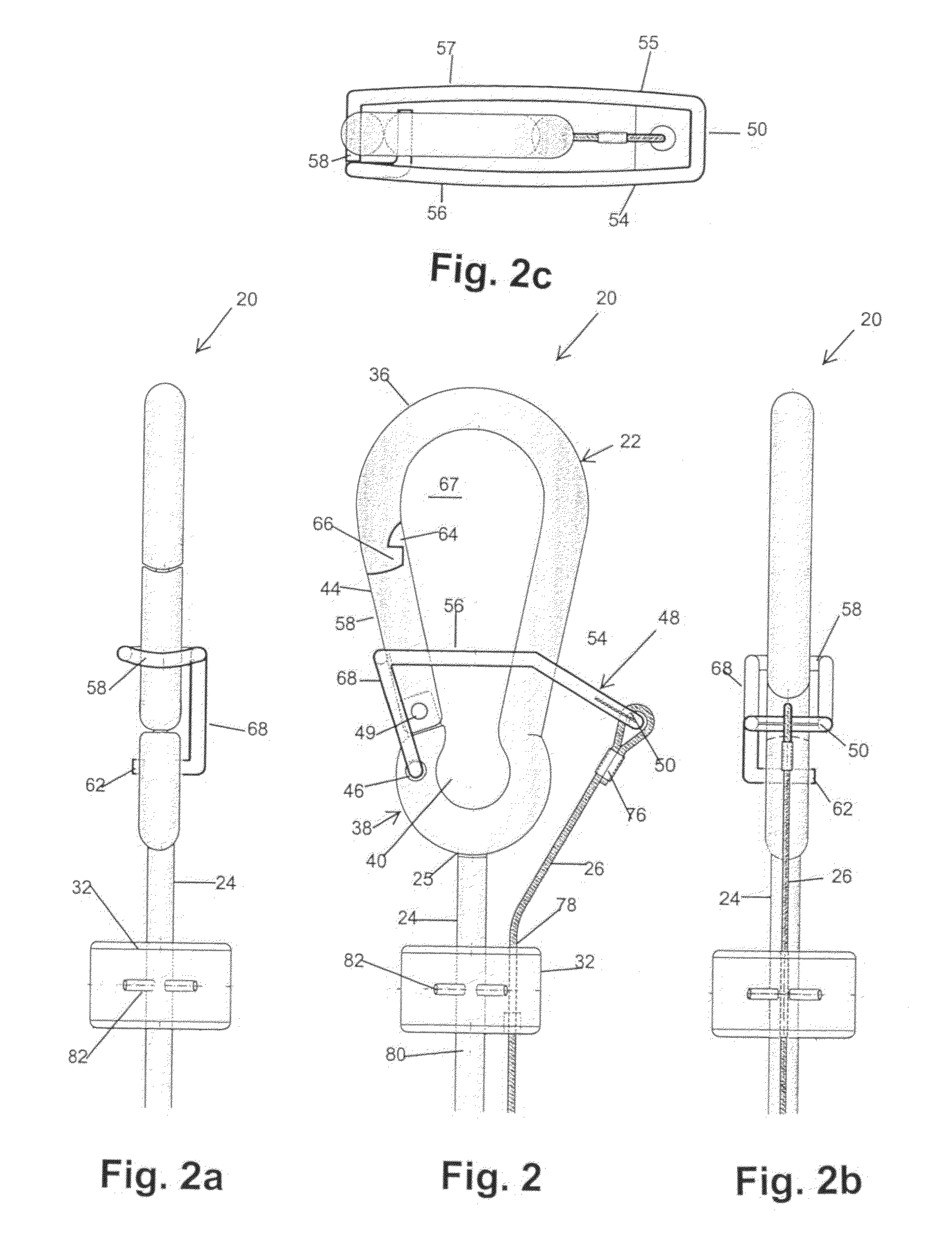Mooring pendant apparatus
a technology of pendant and mooring rod, which is applied in the direction of load-engaging elements, vessel construction, fastening means, etc., can solve the problems of unassisted boaters finding it impossible to moor their boats, difficulty created in trying to tie the rope to the buoy ring may be just as hard, and the boater may even find it impossible to moor his boat. , to achieve the effect of creating leverage for the retractor lever, safe and convenien
- Summary
- Abstract
- Description
- Claims
- Application Information
AI Technical Summary
Benefits of technology
Problems solved by technology
Method used
Image
Examples
Embodiment Construction
[0020]Preferred embodiments of the invention will now be described with reference to the Figures. Some terms used in the description and the appended claims are defined below.
[0021]Referring to FIG. 1, the illustrated mooring pendant apparatus 20 is comprised of the following portions: a clip 22; a central rod 24; a cable 26 that when pulled or released controls the clip 22; handles, both a fixed handle 28, and a movable handle 30; a cable guide 32; and a displaced eyelet 34. The pendant apparatus 20 facilitates the placement and removal of the clip 22 from a boat ring (not shown) or a mooring ball (not shown). The clip 22 connects to the boat ring and / or to a mooring ball through the medium of a mooring line 42 (typically a rope) for the proper securing of the watercraft while in the water. The boater may opt to keep the apparatus onboard and connect to the mooring line, depending on the connectivity design chosen for that particular mooring line. The present apparatus 20 aids the ...
PUM
 Login to View More
Login to View More Abstract
Description
Claims
Application Information
 Login to View More
Login to View More - R&D
- Intellectual Property
- Life Sciences
- Materials
- Tech Scout
- Unparalleled Data Quality
- Higher Quality Content
- 60% Fewer Hallucinations
Browse by: Latest US Patents, China's latest patents, Technical Efficacy Thesaurus, Application Domain, Technology Topic, Popular Technical Reports.
© 2025 PatSnap. All rights reserved.Legal|Privacy policy|Modern Slavery Act Transparency Statement|Sitemap|About US| Contact US: help@patsnap.com



